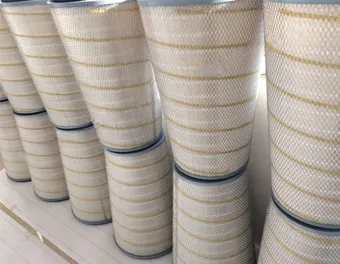 Tel:
+8615930870079
Tel:
+8615930870079
دسمبر . 13, 2024 04:40 Back to list
stainless steel filter element
Understanding Stainless Steel Filter Elements
In the world of filtration technology, stainless steel filter elements have gained significant attention due to their durability, efficiency, and versatility. These filter elements are widely used across various industries, including pharmaceuticals, food and beverage, chemical processing, and oil and gas. This article delves into the intricacies of stainless steel filter elements, highlighting their features, advantages, and applications.
What Are Stainless Steel Filter Elements?
Stainless steel filter elements are devices designed to separate particulates from fluids or gases. Made from high-quality stainless steel, these filter components are engineered to withstand harsh environmental conditions and provide reliable filtration performance. The use of stainless steel, specifically grades like 304 or 316, ensures excellent resistance to corrosion, heat, and various chemicals, making them suitable for a broad range of applications.
Key Features
1. Durability One of the standout features of stainless steel filter elements is their robustness. Unlike conventional filter materials like paper or fabric, stainless steel can endure high pressures and temperatures without deforming.
2. Reusable Stainless steel filters can often be cleaned and reused, which significantly reduces waste and operational costs. This aspect is particularly appealing to environmentally conscious industries looking to minimize their carbon footprint.
3. Fine Filtration These filter elements can be designed to achieve different filtration ratings, from coarse to very fine. The mesh sizes can be tailored to meet specific filtration requirements, allowing for the effective removal of particulates as small as a few microns.
4. Easy Maintenance Stainless steel filters are relatively easy to maintain. Regular cleaning and inspection can extend the life of the filter, ensuring consistent performance without the need for frequent replacements.
5. High Flow Rate The design of stainless steel filter elements allows for high flow rates, making them ideal for processes that require significant volumes of fluid or gas to be filtered quickly.
Advantages
The use of stainless steel filter elements offers numerous advantages
stainless steel filter element

- Cost-Effectiveness While the initial cost may be higher than other materials, the durability and reusability of stainless steel negate the need for frequent replacements, resulting in cost savings over time
.- Versatility These filters can be utilized in different applications across various industries, from water treatment plants to petroleum refining, highlighting their adaptability.
- Health and Safety In food and pharmaceutical applications, the hygienic properties of stainless steel help prevent contamination, ensuring that the final products meet strict safety and health regulations.
Applications
Stainless steel filter elements find their application in numerous fields
- Chemical Industry They are used for filtering solvents, acids, and other hazardous materials, ensuring safe and efficient processes.
- Food and Beverage Industry These filters help in maintaining the quality and safety of consumable products by effectively removing impurities.
- Oil and Gas Sector Stainless steel filters are crucial in refining processes, serving to separate particulates from crude oil and natural gas.
- Pharmaceuticals In this sector, stringent cleanliness standards are paramount. Stainless steel filters help ensure product purity during manufacturing.
Conclusion
In conclusion, stainless steel filter elements represent a vital component in modern filtration technology. Their durability, reusability, and high performance make them a preferred choice across various industries. By investing in stainless steel filter elements, businesses can ensure efficient operations while adhering to safety and regulatory standards. As industries continue to evolve and face new challenges, the role of stainless steel filters will undoubtedly become more prominent, showcasing the importance of innovation in filtration technology.
-
Nano Fiber Technology: Revolutionizing Cartridge Dust Collector FiltersNewsAug.06,2025
-
How Activated Carbon Air Cartridges Eliminate OdorsNewsAug.06,2025
-
Dust Filter Cartridge Handling Fine Particulate MatterNewsAug.06,2025
-
Cartridge Dust Collector Filter for Welding Fume ExtractionNewsAug.06,2025
-
Activated Carbon Filter Cartridge Effectiveness Against VOCsNewsAug.06,2025
-
Activated Carbon Air Filter Cartridge Benefits ExplainedNewsAug.06,2025

 Email:
Email:





